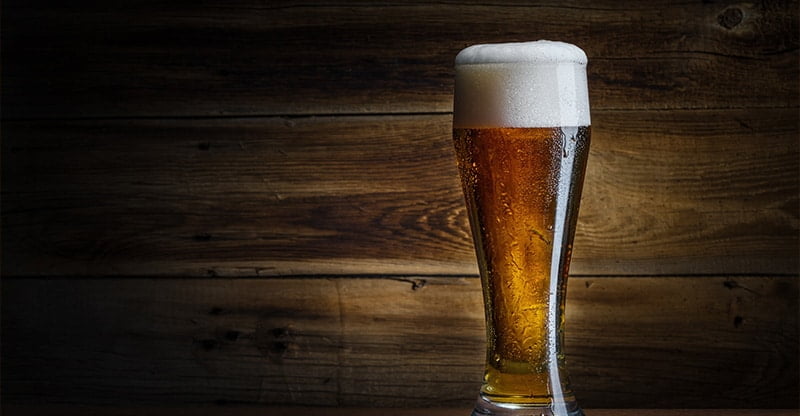Since beer is made from barley and malt which are known sources of gluten, it’s generally considered a gluten-based drink and not recommendable for those suffering from Celiac Disease. However, not all of them have this substance inside as nowadays there are manufacturers who actively remove the compound to make it safer for consumers. Such beers are also free from major allergens making them suitable for vegan diets.
The beer protein found in barley is called hordein, whereas that of wheat is known as gliadin and rye secalin. Currently, there are no known manufacturers who conduct lab tests for these elements. Hence, the idea that any barley-based beer can be labeled gluten-free without conducting testing sometimes raises eyebrows. However, this is not to say that the product contains gluten as there are other ways it can be removed without even undergoing detection.
Though there has been wide-spread belief that brewing can help eliminate hordein proteins making your beer gluten-free. Still, the process does not degrade this compound to non-toxic levels. And in fact a research conducted in Australia on refining beer haze indicates that hordein is still found in beer after brewing has been done.
Based on regular claims by some manufacturers that that the product can be gluten-free, the issue is often misunderstood by consumers. So is beer gluten-free? It’s up to each individual to educate themselves before picking any specific beer brands from the shelves. As always be careful and do your research.
How Stabilizer Concentration Affects Beer Protein Quotient
A study was done to determine the relationship between stabilizer dosage rates and protein molecules, during a controlled beer maturation process. Note that silica hydrogel is often used as the main stabilizer for making this product. At low concentration levels, hordein molecule absorption declined in an ELISA kit proportionally to amount of silica compound added. With maximum saturation point reached at a ratio of roughly 600mg/l silica. Decreases in overall gluten protein quotient was less at higher silica concentrations, meaning that beyond 600- 1200 mg/l stabilizers are not very effective in beer. Therefore, manufacturers should know the correct balance needed to remove gluten from their beverages or else the silica stabilizer extraction process may not be very fruitful.
Gluten Detection and Elimination Process
For normal barley-based drinks, the presence of haze or cloudiness is a clear sign of gluten defect that’s discernible to most consumers. This is the protein that makes foam to rise when poured inside a glass. This haze can also be caused by complex formations of condensed polyphenols/tannins and hordein.
Nowadays, it’s common practice for manufacturers to use beer stabilizers in removing one or even both of these primary haze constituents. For purposes of eliminating proteinaceous material which creates foam, gluten molecules can be industrially degraded using chill-proofing enzyme. Then precipitated by inclusion of polyphenols/tannic acid or adsorbed using silica gels. The efficacy of these reagents is based upon their capacity to target ‘haze’ specific gluten compounds in beer, with minimum side effects on other ingredients responsible for beer foam quality.
Nevertheless, the exact gluten fraction removed using this technique isn’t well defined due to certain analytical difficulties involved in classification of beer proteins. Particularly because the original barley proteins are molecularly modified and often subject to proteolysis, which often occurs during processing and results in an intricate blend of polypeptide fragments found inside beer.
Previously, beer samples were characterized using two distinct groups of hordein sensitive antibodies. With group 1 subunits reacting to B/D aggregates and group 2 to B/C monomers. By this approach, it was discovered that most malt beers contained a significant portion of gluten-derived fragments. The tested beverages contained polypeptides with molecular weight of more than 50,000. They basically reacted with group 1 protein antibodies, while the other group of gluten antibodies detected beer polypeptides of molecular weight 30,000 and below.
During the experiment, high molecular protein was assessed using Coomassie Plus reagents and (BSA) bovine serum albumin standard. Enzyme linked immunosorbent assays (ELISA) were also carried out and antibody binding to specific extracts monitored at an absorption ratio of 414nm.
Other Stabilizer Treatments
Apart from silica gel, there are other stabilization treatments that can be used to break down gluten molecules in beer. A small controlled study was conducted where maturation beer was diluted with some de-aerated water, and centrifuged at a rate of 10,000 rpm per 15 minutes. Chill proofing enzyme and tannic acid were added as compliment stabilizers to silica, and all samples incubated inside ice for an hour then pasteurized at 15 PU. It was found that all of these elements had different reactions to gluten, with some having more effect in breaking it down to non-reactive molecules than others.
Intolerance

For those suffering from Celiac Disease or high levels of gluten sensitivity, even the slightest exposure to this compound can cause negative side effects that might be life threatening. Almost all commercial beer brands contain some amount of gluten that can trigger reactions in Celiac patients. However, there’s still a growing number of distilleries that nowadays cater to those who have this disease. Such people are usually intolerant to glycoproteins found in barley which must be avoided to stay healthy.
Though in U.S the maximum threshold needed for beer to be considered ‘gluten-free’ is 20 units per million of gluten (20ppm), this rating isn’t standard everywhere across the globe and in some countries like Australia only beers with zero detectable gluten can be ranked this way. While these policies vary from one jurisdiction to another, the safest option to take for those suffering from Celiac disease is adhering to the strictest possible standards.
Moreover, brewed beer made from other ingredients other than barley, such as corn, millet or sorghum may lack gluten and will therefore not trigger autoimmune responses in celiac patients. Though some brewers use barley or rye, they still take care to reduce the overall gluten quotient to below 20 parts per million.
Typically, brewers who make low-gluten beers are mandated to test their product for gluten, and record the compound levels in (ppm) or ‘parts per million’. Even though molecular hordeins in such tests may not be detected, smaller portions of this element known as peptides can sometimes be toxic to celiac patients. So is beer gluten-free? Yes and no. Research the brand you are drinking to ensure it is gluten-free.
